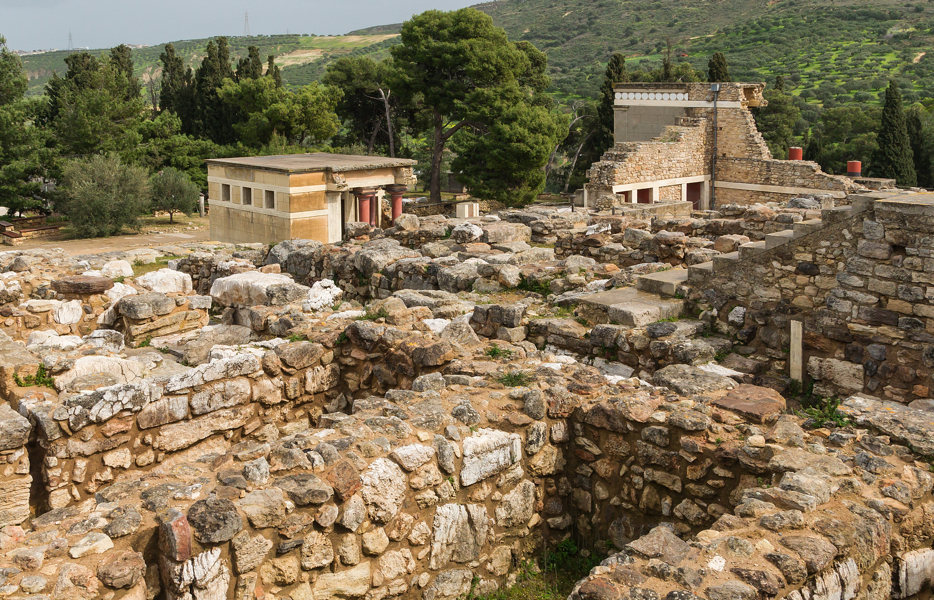
The archaeological site at Knossos, with restored rooms in the background, Crete (photo: Jebulon, public domain)(1)
Archeologist have a responsibility to the preservation of the past. When working on an excavation they must take special care in recording the artifacts so as not to cause further harm. They must also make sure that they share the findings with the public, and one of the ways in which they do this is by restoration. The restoration process can help the public envision what the site may have looked like before it fell into ruins. The problem with this method is that it can cause irreparable damage to the site as well as mislead the public into believing that they are seeing something authentic when it's really an artists conjecture.
What you see above is an example of archeological restoration used to garner interest in what would otherwise be a rather uninspiring place. It is a very popular tourist attraction that probably would be less of a draw if it were just a pile of rocks. It has been turned into a sort of interactive experience where a person can walk through the palace and enjoy the colorful wall paintings or hang out in the spaces meant for kings and queens. By its very nature restoration can be a very valuable educational tool. (2)
Restoration can help preserve artifacts. In fact, it is believed, that without restoration parts of this palace would have fallen into ruin. Would you rather have a lost artifact or one that may not be entirely historically accurate? While it is true that restoration can be misleading it does, however, play an important role in interpreting the past. The artist has the leisure to research and restore the site based on what we know of other archeological sites. He/she can make informed decisions on what is appropriate to add or subtract. (3)
Deciding on whether or not to use restoration on an archeological site may be a difficult choice, but as technology grows we should be able to find a middle ground. It seems that 3D models can serve the same purpose as restoring something as complex as the throne room, and if we can do a 3D model then surely we could add in some virtual reality. There is no simple answer to this complex dilemma of when to use restoration. We just have to trust that one day we will have the technology to make the decision a bit easier.
Notes
1. https://smarthistory.org/ancient-mediterranean/the-palace-at-knossos-crete/
2. Lipe, William D, "Archeological Ethics and Law," in Crow Canyon Archaeological Center, June 5, 2019, accessed September 2, 2020.
3. Dr. Senta German, "The Palace at Knossos (Crete), " in Smarthistory, July 11 2018, accessed September 2 2020, https://smarthistory.org/ancient-mediterranean/the-palace-at-knossos-crete/

Hi Ashley!
ReplyDeleteI really liked how you mentioned that restoration is a double-edged sword in a way. Have 100% historically accuracy, or no artifact at all without the restoration process. It really makes people think about why certain restorations were done. I wish you talked more about the actual restoration that you are referring to in a bit more depth, explaining how it deviated from historical accuracy, what was done, etc. Despite that, I really enjoyed your post! It was very informative and well written!
I like how you touch on the idea that without the archeological restoration, the site wouldn’t be a very inspiring place and would look more like just another pile of rocks. Perspectively speaking, that’s basically what all historic sites, artifacts, and arts are before we choose to give meaning to them: nothing more than what they are presented as. Because we don’t truly know how their cultures worked, there’s potential we barely understand their forms of communication. Without specific restoration, we’re left with very few pieces of the puzzle.
ReplyDelete